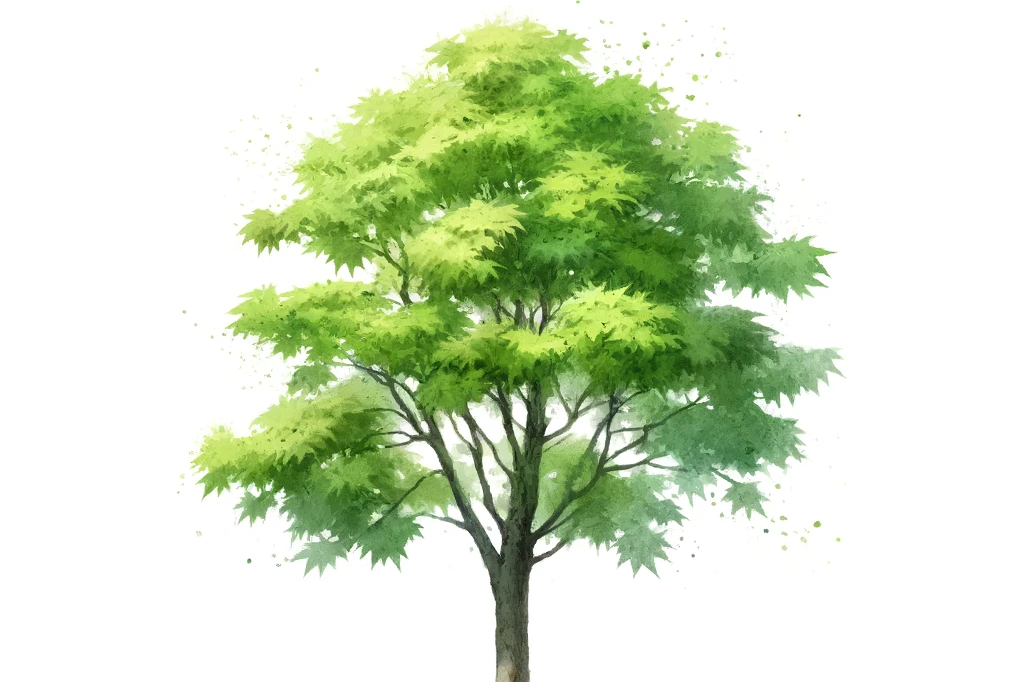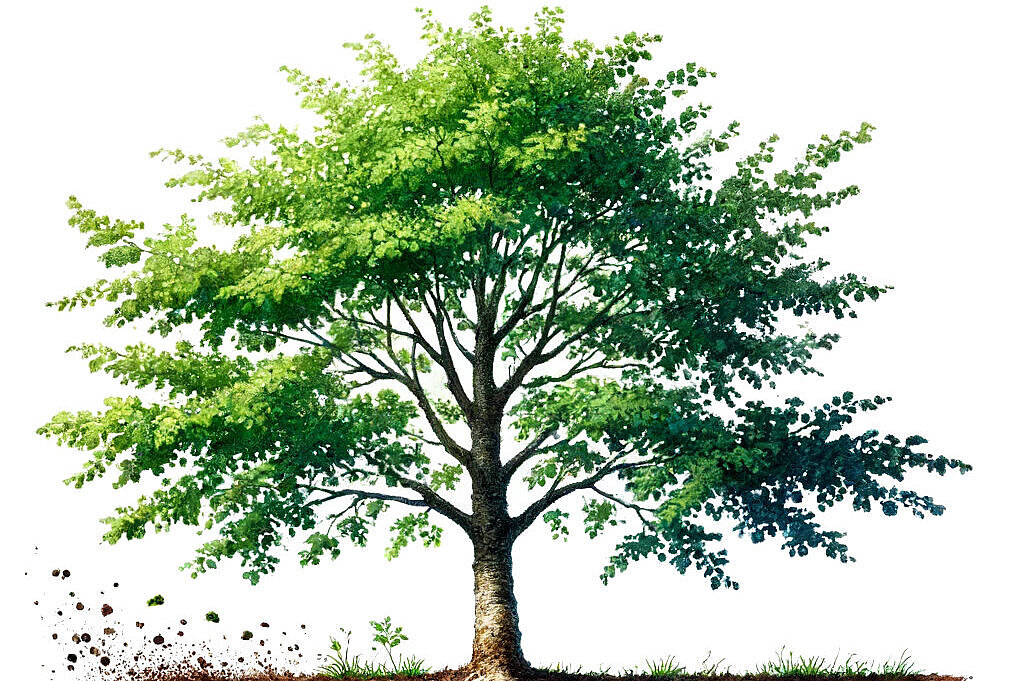Ash

What is the ash tree?
Ash is a tree that occurs in various forest communities, especially on moist or dry sites where beech is less competitive. The ash has a deep taproot with extensive lateral roots that give it a good anchorage in the soil. The ash is a deciduous tree species, which means that it loses its leaves in winter. The leaves are pinnate and consist of 9 to 15 leaflets with serrated edges. The leaves are 20 to 40 cm long and 3 to 12 cm wide. The flowers are unisexual, i.e. there are male and female flowers on different trees. The flowers are green and inconspicuous and appear before the leaves emerge in April or May. The fruits are nuts with a long wing that gives them the appearance of propellers. The fruits ripen in September or October and are spread by the wind.
The ash has a hard, heavy and elastic wood, which belongs to the noble hardwoods. The wood has a light color with a brown heartwood. The wood is used for many purposes, for example for tool handles, sports equipment, furniture or parquet flooring. Ash is also an important source of energy as it provides a lot of firewood.
The ash tree also has mythological significance, especially in Norse mythology. There, the ash tree is regarded as the world tree Yggdrasil, which connects the nine worlds and drips nectar from the sap of life. The ash tree is also associated with the god Odin, who attached himself to the tree to learn the secret of the runes.
What are the benefits of ash trees for dogs?
Ash can have a number of benefits for dogs if used correctly. Ash contains various ingredients that can have a healing effect, for example
- Tannins: they have an astringent effect, which means they contract the mucous membranes and reduce inflammation and bleeding.
- Flavonoids: They have an antioxidant effect, i.e. they protect the cells from free radicals and strengthen the immune system.
- Coumarins: They have a blood-thinning effect and promote blood circulation.
- Phenol ethers: They have an antibacterial and antiviral effect.
Ash can therefore help with various ailments, for example
- Skin problems: Ash can help with skin inflammation, eczema or wounds by promoting healing and preventing infection.
- Joint problems: Ash can help with osteoarthritis or rheumatism by relieving pain and improving mobility.
- Respiratory problems: Ash can help with coughs, bronchitis or asthma by soothing the mucous membranes and facilitating expectoration.
- Digestive problems: Ash can help with diarrhea, gastritis or flatulence by regulating the intestinal flora and stimulating digestion.
Ash can be administered as a tea, tincture or powder. The dosage depends on the size and weight of the dog. A general recommendation is to boil 1 to 2 teaspoons of ash leaves or bark per liter of water and give the cooled tea to the dog. Alternatively, 10 to 20 drops of ash tincture can be diluted with water and given to the dog. Or you can mix 0.5 to 1 gram of ash powder into the dog's food. The application should not last longer than four weeks.
What are the disadvantages of ash for dogs?
Ash is not suitable for all dogs and can also have some disadvantages if used incorrectly or too much. Ash also contains some ingredients that can have a harmful effect, for example
- Mannitol: It has a laxative effect and can cause diarrhea or vomiting in sensitive dogs.
- Fraxin: It has a diuretic effect and can lead to congestion in dogs with kidney problems.
- Fraxetin: It has a blood pressure-lowering effect and can lead to a lack of blood supply in dogs with heart problems.
Ash may therefore be contraindicated in some conditions, for example
- Renal ins ufficiency: ash can further worsen kidney function and lead to intoxication.
- Heart failure: Ash can lower blood pressure too much and lead to circulatory collapse.
- Blood clotting disorders: Ash can inhibit blood clotting and lead to bleeding.
- Stomach ulcers: Ash can irritate the stomach lining and lead to bleeding.
Ash should therefore not be administered without consulting a vet. The dosage should be strictly adhered to. The application should not be combined with other medications that have a similar effect, for example aspirin or warfarin. Use should be discontinued if side effects occur, such as loss of appetite, diarrhea, vomiting or lethargy.
The ash tree is a versatile tree that not only provides valuable wood, but can also have a healing effect. Ash can help with various ailments, such as skin, joint, respiratory or digestive problems. However, ash should not be used without caution, as it can also have some disadvantages, such as diarrhea, lowering blood pressure or blood clotting disorders. The dosage should be strictly adhered to. It should not be used for longer than four weeks.
If you notice any signs of hypersensitivity or poisoning in your dog, you should see your vet immediately. We are not a substitute for a vet, but we try to be as accurate as possible. Every dog reacts differently and we recommend you get a second opinion or consult your vet if in doubt.
Stay healthy and take good care of your four-legged friend!😊
Similar to Ash
Maple is the name of a genus of trees and shrubs found in the northern hemisphere. There are around 200 species of maple, which differ in size, shape, color and leaf structure. The best-known...
The birch is a deciduous tree that is native to Europe, Asia and North America. There are different types of birch, for example the silver birch, the sand birch or the paper birch. The birch has...
Oak is a plant genus consisting of over 600 different species. The best-known species in Germany is the English oak or summer oak (Quercus robur), which can grow up to 40 meters high. The oak has...
Elm is the name of a genus of deciduous trees found in Europe, Asia and North America. The best-known species is the red elm (Ulmus rubra), which is also known as the slippery elm. This elm grows up...



